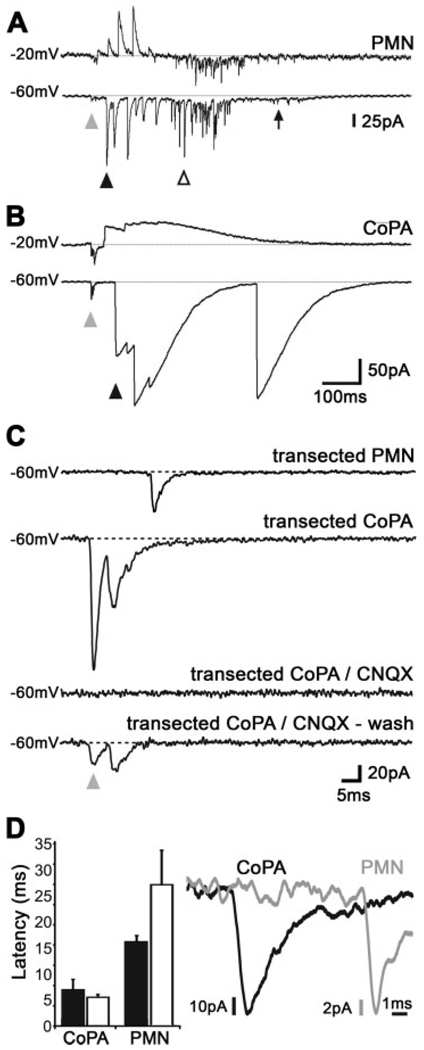Figure 5.
Short latency AMPA currents in CoPA interneurons. (A) Voltage clamp recording of currents elicited in a motoneuron following tactile stimulation of the tail. The recording shows a baseline of 100 ms before the stimulus, which was followed by a small amplitude sensory-evoked synaptic current (SESC) of very short latency (gray arrowhead), then by later arriving large amplitude events that were reversed at −20 mV (black arrowhead). The next events were rapid and of large amplitude and were not reversed at −20 mV (empty arrowhead), and the final event is a slow inward current (arrow). (B) Voltage clamp recording of a CoPA interneuron, which only showed two types of events, a small amplitude and short latency SESC (gray arrowhead), and a slow, large amplitude event that were reversed at −20 mV (black arrowhead). (C) The short latency SESCs in PMNs and CoPA interneurons were insensitive to transections of the spinal cord at somite 6, but they were sensitive to AMPA receptor blockade with CNQX (20 µM). In contrast, the large amplitude depolarizations were abolished by transection. (D) SESCs in CoPA interneurons occurred earlier than in motoneurons, suggesting that CoPAs are upstream to motoneurons with regards to sensory input. Black bars represent intact embryos, open bars transected embryos. Note the 20-fold change in the x axis scale bar as compared to A and B (error bars = s.e.).

